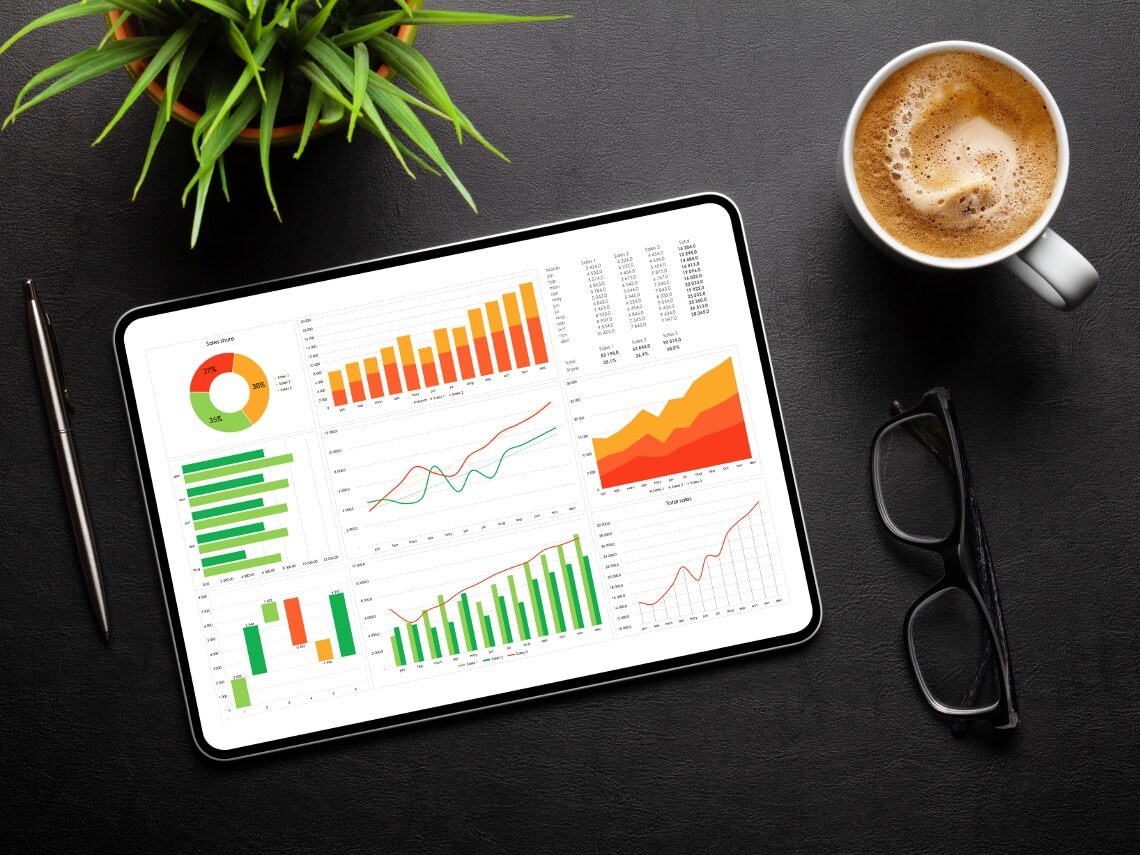In today’s data-driven world, effective decision-making often hinges on the ability to understand and interpret complex data sets quickly. A data dashboard empowers stakeholders to make informed decisions, identify trends, and track progress toward goals by presenting data in a clear, concise, and easily digestible format.
Understanding Data Dashboards
A data dashboard is a customized interface that looks at key performance indicators (KPIs) and metrics. It typically consists of various visual components, such as charts, graphs, tables, and gauges, designed to communicate data in a meaningful way. Dashboards can be tailored to meet the specific needs of different departments or roles within an organization, allowing users to focus on the information most relevant to their work.
The Benefits of Using a Data Dashboard
Improved Decision Making
A data dashboard offers a comprehensive overview of data, empowering stakeholders to make informed decisions more confidently. By identifying trends, anomalies, and patterns within the data, users can proactively address potential issues and capitalize on emerging opportunities. For example, a sales team might use a dashboard to identify declining sales in a particular region, prompting them to investigate underlying causes and implement targeted strategies to improve performance.
Enhanced Efficiency
Dashboards streamline accessing and analyzing data, saving time and effort. With a centralized interface, users can quickly gather the information they need to complete tasks, reducing the likelihood of errors and inconsistencies. For instance, a finance team can use a dashboard to monitor key financial metrics, such as revenue, expenses, and profit margins, allowing them to identify areas for cost-cutting or revenue growth quickly.
Enhanced Collaboration
A data dashboard can facilitate team collaboration by providing a shared data visualization and discussion platform. For example, a marketing team might use a dashboard to track the performance of different marketing campaigns, sharing the data with the sales team to identify potential cross-selling opportunities.
Improved Accountability
Dashboards can help organizations track progress toward goals and identify improvement areas. A data dashboard can drive greater efficiency and productivity by holding teams accountable for their performance. For example, a human resources team might use a dashboard to monitor employee turnover rates, absenteeism, and employee satisfaction, allowing them to identify areas for improvement and implement targeted initiatives to address these issues.
How to Create an Effective Data Dashboard
Define Your Audience
Consider the specific needs and roles of the individuals using the dashboard. Tailor the design and content to ensure the information is relevant and easy to understand. For example, a dashboard designed for senior executives might focus on high-level metrics, while a dashboard for frontline employees might provide more detailed information.
Choose the Right Visualizations
Select visualizations that effectively communicate the data you want to present. Consider factors such as the data type, the message you want to convey and the audience’s familiarity with different visualization techniques. For example, a line chart might be appropriate for showing trends over time, while a bar chart might be better for comparing different categories.
Keep it Simple
Avoid overwhelming users with too much information. The point of data visualization is to make the data more accessible and digestible. Focus on the most important KPIs and metrics and use clear and concise labels. A cluttered data dashboard can be difficult to understand and may even discourage users from using it.
Make it Interactive
Incorporate interactive elements, such as drill-down capabilities and filters, to allow users to explore the data at different levels of detail. For example, a user might be able to click on a specific region on a map to view more detailed sales data for that area.
Ensure Data Quality
Verify the accuracy and consistency of the data used in the dashboard. Errors in the data can lead to incorrect insights and decisions. Regular data quality checks are essential to maintaining the dashboard’s reliability.
A data dashboard provides a clear and concise visualization of key metrics, allowing stakeholders to make informed decisions, improve efficiency, and drive innovation. Organizations can create effective dashboards that deliver real value by following the best practices outlined in this guide.
Kobargo Is Your Source for Website Security Services
Outsourcing IT services can be a smart choice for businesses that want to focus on their core competencies. It can help them gain access to expertise and resources and improve cost-effectiveness, security, flexibility, scalability, performance, and reliability.
With nearly 50 years of experience working in technology, Kobargo is skilled in all Information technology matters. If you’re interested in outsourcing your IT infrastructure, contact us today to learn how we can help.




